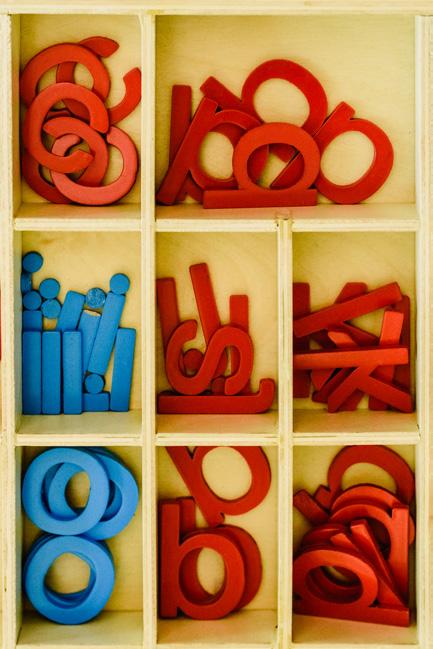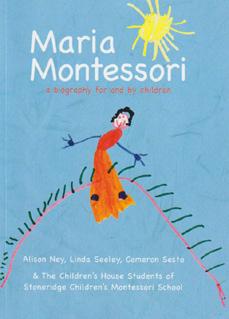
3 minute read
Finding Montessori
by Alex Gallen
Several years ago, when I was shopping for preschools for my middle child, I visited a Montessori school for the first time. When I walked into the Montessori classroom, I was amazed by how purposeful all the lessons were. The classroom was calm, and the teachers used low voices. Unlike the daycares I had visited, there was no chaos, such as children running around and shouting, and the teacher wasn’t front and center of the room. I remember thinking, “I like these toys,” only later realizing those were lessons.
I was so impressed I wanted to learn more about the Montessori Method. Where did the Montessori Method start? Who was Maria Montessori? After reading and researching this topic, I began implementing some of the principles I had learned. I transformed my children’s bedrooms by placing the artwork at their eye level, moving their beds to be low to the ground, and we began making snacks together. Additionally, I empowered them to complete Practical Life work on their own. I received a lot of inspiration from my child’s teacher, who later became my good friend.
I became so invested in understanding what seemed so natural, yet so scientific, that I started volunteering at the school and later decided to obtain certification in the Montessori Method.
Today I am a Montessori primary teacher, I am so glad I chose this method for my children, and I carried the lessons to my home. My youngest child was in my classroom and is now in the upper school. What have I learned from my time in the classroom and my experience at home with three children?
The Montessori Method is about peace education, tolerance, diversity, and community, among other essential elements. The core value is respect: respect for the child as a human being; respect for their choices; respect for the environment; and respect for the community.
Montessori teachers care deeply about their students. At the beginning of each school year, grace and courtesy lessons are essential. We are consistent with our environment's routine and focus deeply on connecting with our students, because a child should not have to listen to a stranger. We try to remember ‘connection before correction.’
The Montessori classroom environment is thoughtfully planned and laid out in a sequence. This makes logical sense, enhancing teachers' ability to observe and follow the children individually. Unlike a factory, every child moves at their own pace, and you can watch two children working close to each other even while working on different lessons.
Children remain in one classroom for three years, so they get to know their teachers and peers well, and the environment will provide work that will challenge the child in every area of the curriculum. It is a privilege to watch a child develop from age three to six, making their own choices, learning from their mistakes, and mastering lessons at their own pace. They eventually become role models and guide the other children by the end of their third year in the classroom. They develop self-esteem and confidence. It is not fair to interfere in a child’s learning experience by doing things for them and taking away the accomplishment of learning on their own and feeling a sense of pride from achieving goals.
I fight this battle regularly. Sometimes you want things to get done quicker, more precisely, and feel needed by your child. It gives parents and teachers a sense of purpose, yet we need to let children become selfreliant adults responsible for the real world. Ultimately, we need to trust them.










